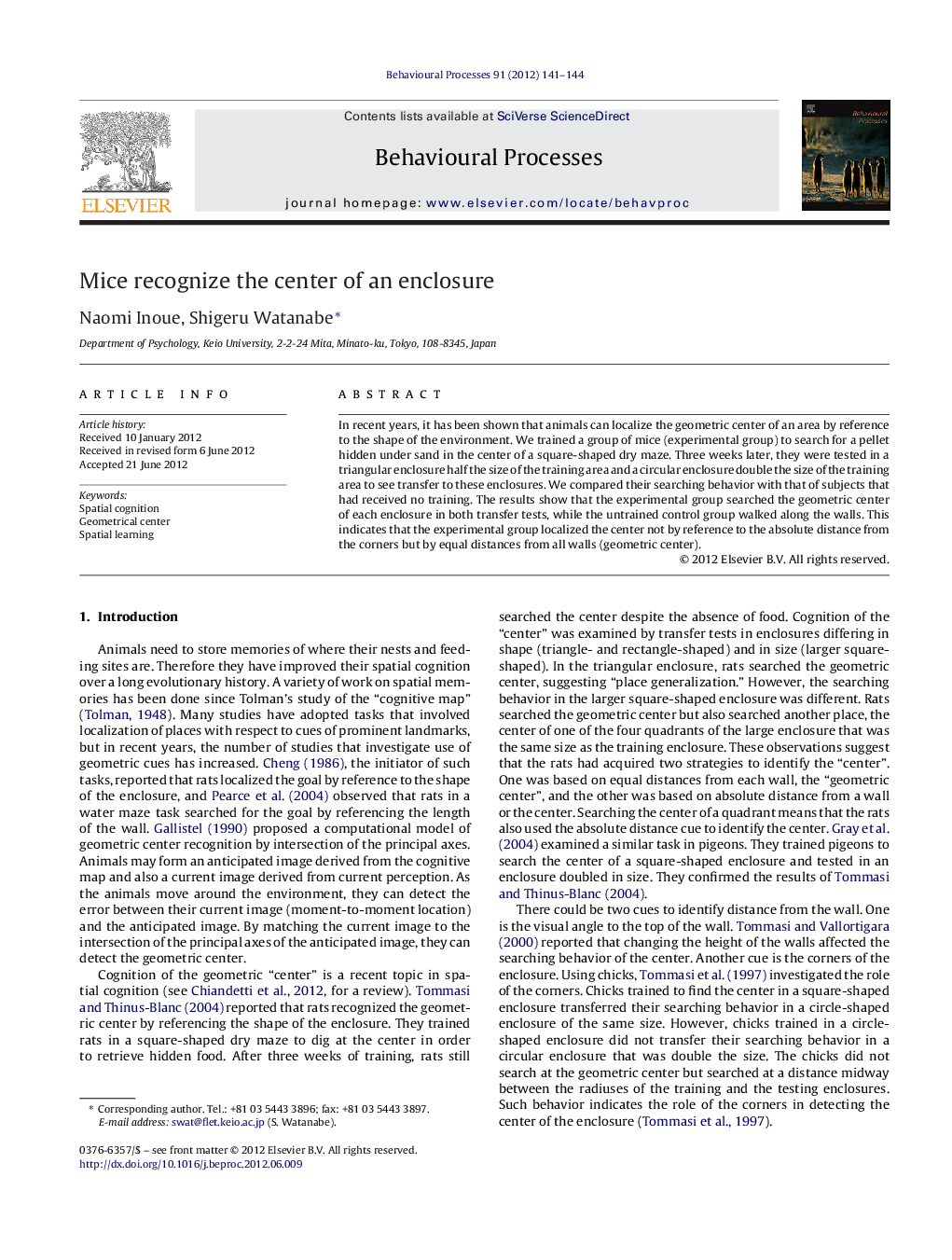| Article ID | Journal | Published Year | Pages | File Type |
|---|---|---|---|---|
| 2426986 | Behavioural Processes | 2012 | 4 Pages |
In recent years, it has been shown that animals can localize the geometric center of an area by reference to the shape of the environment. We trained a group of mice (experimental group) to search for a pellet hidden under sand in the center of a square-shaped dry maze. Three weeks later, they were tested in a triangular enclosure half the size of the training area and a circular enclosure double the size of the training area to see transfer to these enclosures. We compared their searching behavior with that of subjects that had received no training. The results show that the experimental group searched the geometric center of each enclosure in both transfer tests, while the untrained control group walked along the walls. This indicates that the experimental group localized the center not by reference to the absolute distance from the corners but by equal distances from all walls (geometric center).
Graphical abstractFigure optionsDownload full-size imageDownload as PowerPoint slideHighlights► Mice learned to find a pellet hidden in the center of a squared dry maze. ► They searched the center in a half-sized triangular enclosure. ► They also search the center find in a double expanded circular enclosure. ► The results demonstrated the geometric center recognition in mice.
